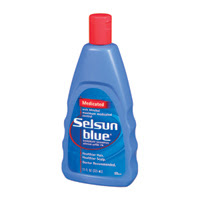 The ligaments of the knee may be stretched (strained), partially torn (sprained), or completely torn (torn ligament). Unlike the ankle, torn ligaments in the knee need to be repaired surgically as soon as possible after the in-jury occurs. If surgery is delayed, the operation is more difficult and less likely to be successful. For this reason, the approach to knee injuries is more cautious than for ankle injuries. If there is any possibility of a torn ligament, go to the doctor. Fractures in the area of the knee are less common than around the ankle and need to be cared for by a doctor.
The ligaments of the knee may be stretched (strained), partially torn (sprained), or completely torn (torn ligament). Unlike the ankle, torn ligaments in the knee need to be repaired surgically as soon as possible after the in-jury occurs. If surgery is delayed, the operation is more difficult and less likely to be successful. For this reason, the approach to knee injuries is more cautious than for ankle injuries. If there is any possibility of a torn ligament, go to the doctor. Fractures in the area of the knee are less common than around the ankle and need to be cared for by a doctor. Significant knee injuries usually occur during a sports activity, when the knee is more likely to experience twist-ing and side contact; these are responsible for most ligament injuries. (Deep knee bends stretch knee ligaments and may contribute to knee injuries; they should be practiced cautiously, if at all.) Serious knee injuries occur when the leg is planted on the ground and a blow is received to the knee from the side. If the foot cannot give way, the knee will. There is no way to totally avoid this pos-sibility in athletics. The use of shortlOr spikes and cleats help, but elastic knee supports and wraps give virtually no protection.
When ligaments are completely torn, the lower leg can be wiggled from side to side when the leg is straight. Compare the injured knee to the opposite knee to get some idea of what amount of side-to-side motion is normal. Your examination will not be as skilled as that of the doc-tor, but if you think that the motion may be abnormally loose, see the doctor.
If the cartilage within the knee has been torn, the normal motion of the knee may be blocked, preventing it from being straightened. Although a torn cartilage does not need immediate surgery, it de-serves prompt medical attention. The amount of pain and swelling does not in-dicate the severity of the injury. The ability to bear weight, to move the knee through the normal range of motion, and to keep the knee stable when wiggled is more important. Typically, strains and sprains hurt immediately and continue to hurt for hours and even days after the injury. Swelling tends to come on rather slowly over a period of hours, but may reach rather large proportions. When a ligament is completely torn, there is in-tense pain immediately, which subsides until the knee may hurt little or not at all for a while. Usually, there is signifi-cant bleeding into the tissues around the joint when a ligment is torn so that swelling tends to come on quickly and be impressive in its quantity. The best pol-icy when there is a potential injury to the ligament is to avoid any major activ¬ity until it is clear that this is a minor strain or sprain. Home treatment is in-tended only for minor strains and sprams.
Home Treatment
RIP is again the key word-rest, ice, and protection. Rest the knee and elevate it. Apply an ice pack for at least thirty minutes to minimize swelling. If there is more than slight swelling or pain, despite the fact that the knee was immediately rested and ice was applied, see the doctor. If this is not the case, apply the ice treatment on the khee for thirty minutes and then off for fifteen minutes for the next several hours. Limited weight bearing may be attempted during this time with a close watch for increased swelling and pain. Heat may be applied after twenty-four hours. By then, the 'knee should look and feel relatively normal, and after seventy-two hours this should clearly be the case. Remember, however, that a strain or sprain is not completely healed for four to six weeks and requires protection during this healing period. Elastic bandages will not give adequate support but will ease symptoms a bit and remind the patient to be care¬ful with the knee.


















